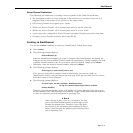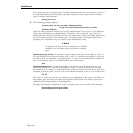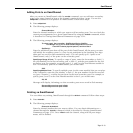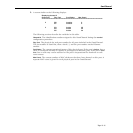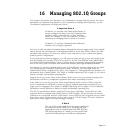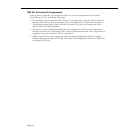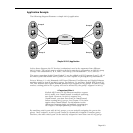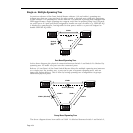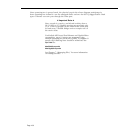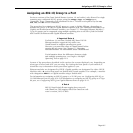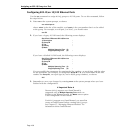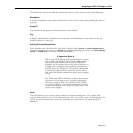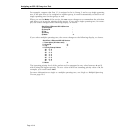
Page 16-3
Application Example
The following diagram illustrates a simple 802.1Q application:
Simple 802.1Q Application
In the above diagram, the PC devices (endstations) need to be segmented into different
802.1Q VLANs. The switch port to which each device attaches is assigned to an 802.1Q group
(Group 2 for endstations A, B, E, and F, and Group 3 for endstations C, D, G, and H).
The ports connecting Switch X and Switch Y are also added to 802.1Q groups 2 and 3. All of
the switch ports that handle 802.1Q traffic are now capable of passing 802.1Q information.
Prior to Release 4.4, only Mammoth ASIC-based Ethernet, Fast Ethernet and Gigabit Ethernet
modules could be part of an
802.1Q group. For Release 4.4 and later, Kodiak ASIC-based 10/
100, Fast Ethernet and Gigabit Ethernet modules also support 802.1Q groups. In either config-
uration, existing policies for a group will not be affected by the group’s support for 802.1Q.
♦ Important Note ♦
Kodiak ASIC-based 10/100 Ethernet modules support
802.1Q traffic over OmniChannel in multiple spanning
tree mode. However, for 802.1Q support over
OmniChannel, you must first create an OmniChannel
before creating 802.1Q groups. See Chapter 15 for infor-
mation about OmniChannel. For information on the
differences between single and multiple spanning tree,
see Single vs. Multiple Spanning Tree on page 16-4.
By matching switch ports with
802.1Q groups, you are statically assigning the port to the
group. Once assigned, an 802.1Q port cannot be dynamically assigned to another group.
However, the same switch port can be statically assigned to more than one 802.1Q group.
12345678
123456
Switch X
A
B
C
D
12345678
123456
Switch Y
E
F
G
H
Group 3
Group 3
Group 2
Group 2
Groups
2 and 3



